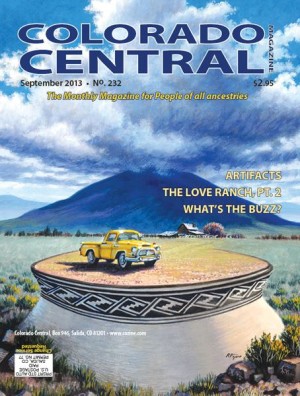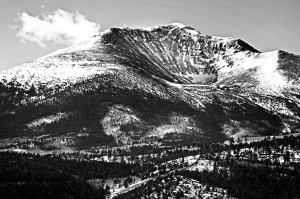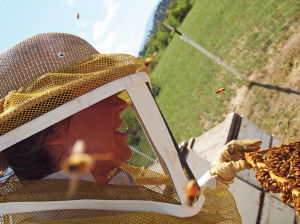By Hal Walter
After 34 years of pack-burro racing, it’s perhaps not so remarkable that this season I finally attained the sport’s Triple Crown title, a feat that involves being the first place man or woman in each of the sport’s big races in the Colorado mountain towns of Fairplay, Leadville and Buena Vista.
What is remarkable is how many firsts marked this season of passage in Colorado’s indigenous sport, and the way we view the genders of both the animals and their runners.
For the uninitiated, pack-burro racing began in 1949, with a race between the towns of Leadville and Fairplay. The rules today are much as they were then. The entrants may run or walk with their burros, and the animals must carry a packsaddle with 33 pounds that includes a pick, pan and shovel. The burro must be led by a rope of no more that 15 feet.
The World Championship race at Fairplay is 29 miles, the open course at Leadville is about 20 miles, and the new, long course at Buena Vista is 18 miles. These courses are routed over rugged mountain terrain, and the Fairplay and Leadville races top out at 13,187 feet elevation on Mosquito Pass.
Through the years the Triple Crown had always eluded me. Possibly because I put so much emphasis on preparing for the Fairplay race, the circuit’s longest – and the only one with the word “World” in front of it. Since that race is first in the lineup, and the following races fall on consecutive weekends, recovery has always been difficult for me.
This year I arranged to run a jenny named Full Tilt Boogie owned by Curtis Imrie of Buena Vista. I brought her to my ranch last October, and working with her over the nine-month period leading up to the Fairplay race was rejuvenating in many ways. From the beginning, when I agreed to run Boogie, the design was for me to have one shot at a World Championship at Fairplay, a sort of last chance for an aging athlete at 53 years old in a sport that appeared to be entering a new era, with fresh runners and wild energy.
After an exciting race that saw Karen Thorpe of Salida and her jenny, Kokomo, reach the Mosquito Pass summit in first place, and then a back-and-forth duel between myself and last year’s winner George Zack of Broomfield and burro Jack on the descent, Boogie won the World Championship by two seconds, with George and Jack right there in second place, and Karen finishing just a few minutes back in third.
That evening after we won Fairplay, Curtis said, “put Boogie in your trailer and take her home. I’m not going to stand in the way of your chance to win a Triple Crown.”
I was so sore after that race that I wasn’t even able to jog for several days. And when Boogie and I showed up at Leadville the following Sunday, I could still feel Fairplay in my quads. Karen and I ran together most of the way, and then after a fast descent through California Gulch, her jenny Kokomo took control on Harrison Avenue. Just a block from the finish line Boogie turned up a side street where the trailer was parked. Karen and Kokomo cruised to the finish in first and we walked the last few feet for second.
The controversy began almost immediately. There’s also a shorter “women’s” course at Leadville, and traditionally the female Triple Crown candidate had been the women’s course winner. (Men are not allowed to run the women’s course but women are welcome in the long “open” course). So what did this mean for Karen? By the way, two other women, Lynette Clemons and Barbara Dolan, have also won the open course in recent years.
Further complicating things, never before had a guy who was in the running for the men’s Triple Crown finished behind a woman at Leadville. Since Karen had finished third at Fairplay and was still in the running, would it be a double standard to eliminate me?
After a pow-wow of race and burro association officials, it was decided both Karen and I would advance as the male and female Triple Crown contenders for the final race at Buena Vista.
The controversy ensued. Some teased that I’d been “chicked,” which I could care less about – this sport has more to do with the burros than with the gender of their runners. I gathered some people thought I should withdraw because I’d not won the Leadville open course. Others thought Karen should withdraw because she had not won the shorter Leadville women’s race, which has historically been the women’s Triple Crown qualifier. But hadn’t Karen soundly proven she was not only the top women’s competitor but indeed the top overall competitor at Leadville by winning on the longer course?
The following week at Buena Vista, Boogie and I had taken a several-minute lead in the 18-mile long course when we encountered some slower teams in the short course on the trail just about a mile from the finish. Though they kindly yielded the trail to us, Boogie would not leave their burros behind and Karen soon caught up. After we reached the bridge over the Arkansas, Boogie and Kokomo raced for the finish, with Kokomo again charging ahead to win and Boogie and I finishing second, but again the first male.
My first Triple Crown proved to be only one of many other firsts. A jenny donkey had never won a Triple Crown – and two did this year! At 53 I’m surely the eldest person to win the World Championship race or a Triple Crown. No woman had ever won the open course at Leadville in the process of winning a Triple Crown. And no man had ever won a Triple Crown having finished second place to a woman in any of the Triple Crown races, much less two of them. But hey, at this point in my life, I’m comfortable with my masculinity and happy to be the guy to usher in this new era!
What impresses me most about pack-burro racing is how these animals and this sport make a person reach deep down inside to reacquaint with ourselves, our deepest feelings, our wildest dreams. I think that’s why I keep at it. Winning a race is great, and winning a Triple Crown is OK, too. But it’s gone as soon as it happens. What you learn about yourself in the process sticks with you forever.
Hal Walter writes and edits from the Wet Mountains. You can keep up with him regularly at his blog: www.hardscrabbletimes.com.




